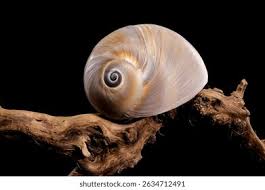Introduction
The Polymita snail, particularly Polymita picta, is a remarkable species native to the lush landscapes of Cuba. With its vibrant, intricately patterned shells, the Polymita has captured the interest of both researchers and collectors alike. However, despite its stunning appearance, the Polymita snail faces significant threats due to habitat destruction and illegal harvesting. Understanding the importance of this unique mollusc is crucial not only for biodiversity preservation but also for maintaining the ecological balance in its native environment.
Status and Threats
Polymita snails, often referred to as ‘painted snails’ due to their colourful shells, are currently classified as endangered by the International Union for Conservation of Nature (IUCN). Their natural habitats, which include tropical and subtropical forests, are increasingly under threat from urban expansion, agriculture, and deforestation. The demand for Polymita shells in the tourism and illicit pet trade further exacerbates their vulnerability. Recent reports reveal a significant decline in their populations, prompting conservationists to devise strategies aimed at habitat protection and regulating the international trade of these stunning snails.
Conservation Efforts
In response to the alarming decline in Polymita snail populations, various organisations and governmental bodies are stepping up conservation efforts. The Cuban government, along with international NGOs, has initiated programmes focused on habitat restoration and public education to raise awareness about the ecological importance of Polymita snails. Establishing protected areas and implementing laws against illegal collection are also vital measures being taken to safeguard the future of this unique species. Community involvement is key to these efforts, as locals are encouraged to participate in conservation projects and sustainable practices to protect their natural heritage.
The Importance of Polymita Snails
The significance of Polymita snails extends beyond their beauty. They play a vital role in the ecosystem as herbivores, helping to manage and maintain vegetation in their habitats. Moreover, their presence is an indicator of environmental health, making their conservation essential for broader ecological monitoring. The plight of the Polymita snail serves as a reminder of the inherent value of biodiversity and the ongoing challenges faced by many species in the face of human activity.
Conclusion
As the Polymita snail continues to struggle against the repercussions of habitat loss and exploitation, it highlights the pressing need for continued conservation efforts. Awareness and education are crucial in ensuring that this exquisite creature can thrive for future generations. As citizens of the planet, understanding the interconnectedness of our ecosystems serves as a compelling call to action. By supporting biodiversity initiatives and promoting sustainable practices, we can play a part in ensuring that the Polymita snail, and many others like it, do not vanish from our world.

